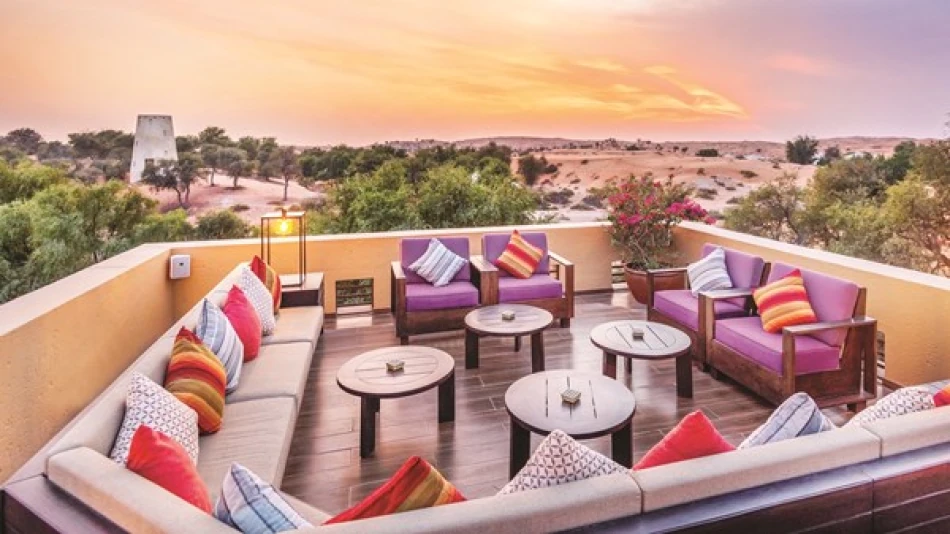
Luxury Hotels in Abu Dhabi's Zayed District Achieve Record-Breaking Occupancy Rates in Q2
Abu Dhabi's Al Dhafra region is quietly becoming the emirate's standout hospitality performer, with hotels there recording the longest guest stays and strong occupancy rates that outpace other areas. The region's success reflects a broader tourism strategy that's paying off across Abu Dhabi, with the emirate pulling in billions in hotel revenue while positioning itself for ambitious growth targets by 2030.
**Al Dhafra leads in guest loyalty**
Hotels in Al Dhafra region recorded the highest average stay in Abu Dhabi during the second quarter of 2024, with guests spending an average of 4 nights. The region also maintained a solid 64% occupancy rate during this period. In July alone, these numbers improved further to 4.7 nights per stay and 63% occupancy.
This performance stands out when compared to Al Ain, where hotels averaged just 1.6 nights per guest stay in the second quarter with 61% occupancy. Al Ain saw some improvement in July, reaching 65% occupancy with guests staying an average of 2 nights.
The longer stays in Al Dhafra suggest the region is successfully attracting visitors who want extended experiences rather than quick stopovers. This trend is particularly valuable for hotel operators since longer stays typically mean higher revenue per guest and better operational efficiency.
**European visitors drive extended stays**
European tourists are leading the charge when it comes to extended visits to Abu Dhabi. During July, European guests stayed an average of 3.7 nights across the emirate's hotels, followed by visitors from the Americas who averaged 3.3 nights.
This pattern aligns with typical long-haul travel behavior, where international visitors justify longer flights with extended stays. For Abu Dhabi's tourism sector, these longer visits from high-spending markets represent significant value.
**Strong growth trajectory**
Al Dhafra's performance represents more than just good quarterly numbers. The region posted exceptional growth last year with hotel revenues jumping 16.6%, occupancy rates surging 35%, and average stay duration climbing 27%.
These aren't small improvements - they represent fundamental shifts in how the region attracts and retains visitors. The 35% jump in occupancy rates particularly stands out, suggesting new properties are filling up while existing hotels maintain strong performance.
**Infrastructure and capacity**
Abu Dhabi's hotel infrastructure shows a clear concentration in the main city, but Al Dhafra and Al Ain provide important alternatives. Al Dhafra operates 14 hotels with 1,700 rooms, while Al Ain has 19 hotels with 2,500 rooms. Abu Dhabi city dominates with 138 hotels and 30,100 rooms.
The emirate's total capacity reached 171 hotels with 34,200 rooms by the end of 2024. This distribution allows different regions to target distinct visitor segments - from business travelers in the capital to adventure seekers in Al Dhafra's desert landscapes.
**Strong financial performance**
Abu Dhabi's hotels generated impressive numbers in the first seven months of 2024, welcoming 3.4 million guests and earning 4.8 billion dirhams in revenue. July alone brought in 485 million dirhams with 77% average occupancy across 514,000 guests.
These figures demonstrate the emirate's ability to maintain high occupancy while commanding strong room rates. The combination suggests healthy demand that isn't being met through discounting.
**2030 ambitions**
Abu Dhabi's tourism strategy sets bold targets for 2030: attracting 39.3 million visitors, growing the sector's GDP contribution to 90 billion dirhams, and creating 178,000 tourism jobs.
Reaching these goals will require sustained growth well beyond current levels. But the strong performance in regions like Al Dhafra, combined with robust overall numbers, suggests the emirate has momentum behind its expansion plans.
The success of smaller regions like Al Dhafra also indicates that Abu Dhabi's tourism growth isn't just concentrated in the capital city. This distributed growth pattern could prove more sustainable and help the emirate avoid over-tourism issues that affect other major destinations.
Most Viewed News

 Layla Al Mansoori
Layla Al Mansoori






